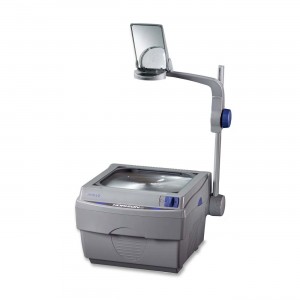

This saves time, since the transparency can be pre-printed and used repetitively, rather than having materials written manually before each class.

Teaching materials can be pre-printed on plastic sheets, upon which the educator can directly write using a non-permanent, washable color marking pen. The overhead projector facilitates an easy low-cost interactive environment for educators. Overhead projectors were widely used in education and business before the advent of computer-based projection. They were widely used in education and business before the advent of video projectors. These are placed on the glass platen of the projector, which has a light source below it and a projecting mirror and lens assembly above it (hence, ‘overhead’). In the overhead projector, the source of the image is a page-sized sheet of transparent plastic film (also known as ‘foils’) with the image to be projected either printed or hand-written/drawn. Instead of carrying your presentation on a thumb drive or CD, plan on toting along a box of transparencies, as well as a few extras tools to add depth to your talk. You may consider overhead projectors to be yesterday’s technology, but when you know you’ll be making a presentation in a facility that relies on them, you can set up an effective set of projection materials that work just as well as digitally projected output.

An overhead projector (OHP), like a film or slide projector, uses light to project an enlarged image on a screen, allowing the view of a small document or picture to be shared with a large audience.


 0 kommentar(er)
0 kommentar(er)
